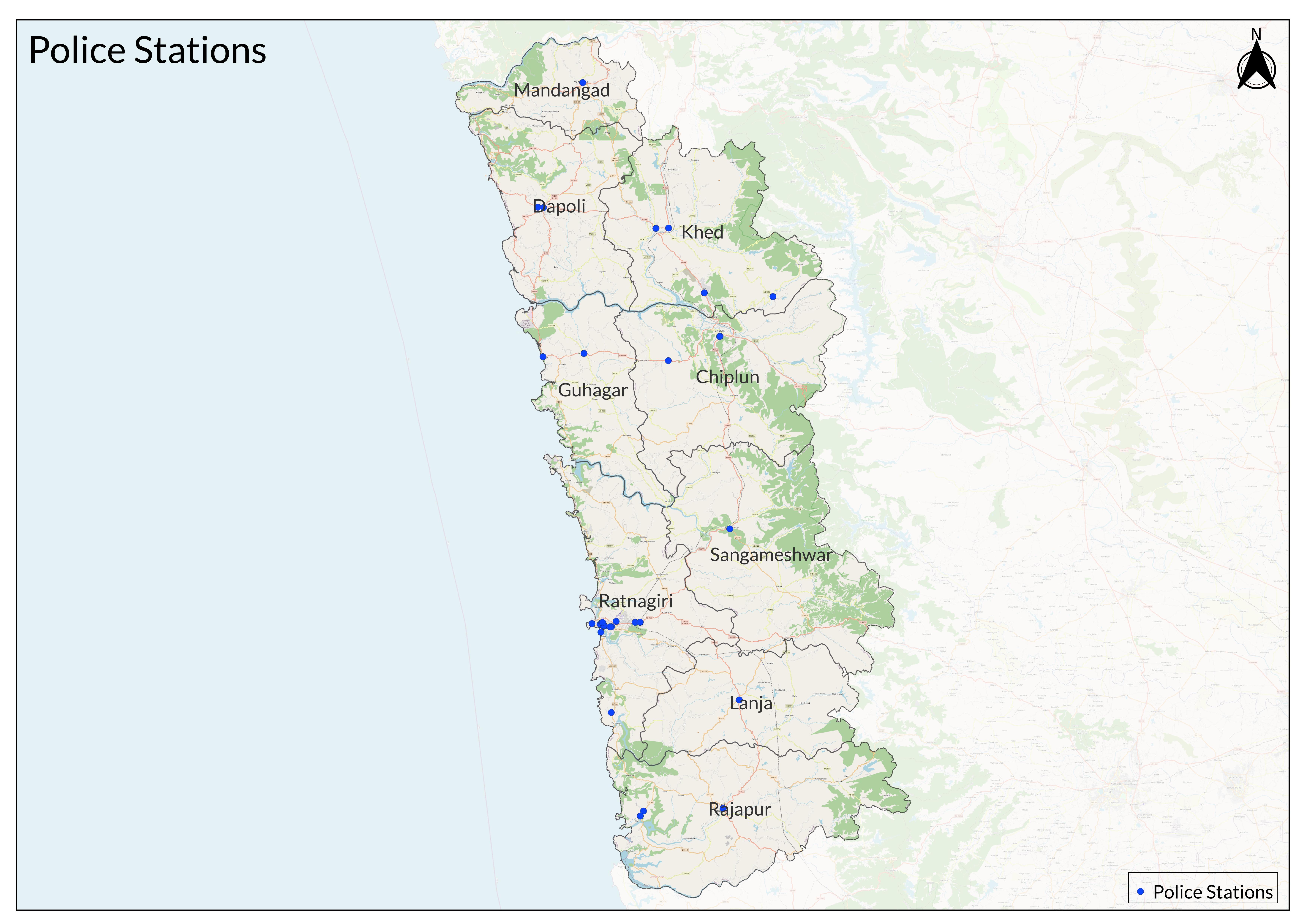Contents
- Jail System
- Community Perception of Safety
- Graphs
- Criminal Cases
- A. Cognizable Crimes under the Indian Penal Code (IPC)
- B. Select Offenses affecting the Human Body
- C. Select Offenses against Property
- D. Select Offenses against Public Tranquility
- E. Select Offenses relating to Documents and Property Marks
- F. Select Miscellaneous Crimes under the IPC
- G. Cognizable Crimes under Special and Local Laws (SLL)
- H. Select Offenses under Special and Local Laws (SLL)
- I. Crimes against Women
- J. Select Cases of Crimes against Women
- K. Cyber Crime
- L. Select Cases of Cyber Crime
- M. Cases of Fraud
- N. Reported Crimes against Women and Children
- Police Infrastructure and Workforce
- A. Police Infrastructure
- B. Police Officers and Employees
- Judicial Systen
- A. Number of Functioning Courts
- B. Judge Positions
- C. Cases Resolved
- D. Number of Original Cases Resolved
- E. Number of Appeal Cases Resolved
RATNAGIRI
Police & Judiciary
Last updated on 5 November 2025. Help us improve the information on this page by clicking on suggest edits or writing to us.
Ratnagiri district is served by a comprehensive network of police stations and outposts, ensuring effective law enforcement across both urban and rural areas. The district is divided into the Ratnagiri City Subdivision and the Rural Subdivision, each having several strategically located police stations. The City Subdivision includes key police stations such as Ratnagiri City, Mandangad, and Lanja, providing robust policing in the urban areas. The Rural Subdivision encompasses several police stations across various tehsils, including Rajapur, Khed, Chiplun, and Dapoli, ensuring vigilant law enforcement in the district’s rural regions

Jail System
The Ratnagiri Special Jail holds significant historical importance due to its association with prominent figures during British colonial rule, particularly in the context of India's struggle for independence. One of the most notable prisoners held at the jail was Vinayak Damodar Savarkar. After being transferred from the Andaman Cellular Jail, Savarkar was imprisoned at Ratnagiri Jail from May 1921 until his release on January 6, 1924. During his time in Ratnagiri, Savarkar authored "Essentials of Hindutva," laying the foundation for his political philosophy of Hindutva. His cell at the Ratnagiri Special Jail has been preserved as a memorial, although details about its formal designation as the "Swatantryaveer Savarkar Memorial Room" are not widely documented.
The jail also served as a detention site for other individuals deemed threats to British colonial rule, underscoring its significance in India's independence movement.
Another historical figure linked to Ratnagiri is Thibaw Min, the last king of Burma (now Myanmar). After being deposed by the British in 1885, he was exiled to Ratnagiri along with his family. In 1910, the British government built Thibaw Palace to house the exiled king and his family. Thibaw Min lived there until he died in 1916. The palace, located on a hill about 3 kilometers from Ratnagiri city center, is known for its elegant architecture and historical significance. Today, Thibaw Palace functions as a museum, showcasing artifacts related to the king's life and exile.
The Ratnagiri Special Jail and Thibaw Palace reflect the district’s complex colonial history and its connection to key figures in India’s struggle for sovereignty and the broader impact of British imperialism in South Asia.
![Khed Police Station[1]](/media/statistic/images/maharashtra/ratnagiri/police-judiciary/khed-police-station1-4db3a413.jpg)
Community Perception of Safety
In Ratnagiri district, most people prefer to stay indoors after sunset unless work requires them to be out, especially those on night shifts. Even in urban areas, street activity drops significantly after 9–10 PM, including on major roads. Parents are often hesitant to let daughters travel alone at night.
A notable issue is the treatment of the Katkari community, a Protected Vulnerable Tribal Group. Locals report that Katkaris frequently face police harassment due to long-standing stereotypes linking them to criminal activity. Many have been falsely accused of minor offenses like pickpocketing and, in some cases, serious crimes such as murder. The community also struggles with alcoholism, which deepens their marginalization.
Trust in the police is especially weak in rural parts of the district, where officers are often seen as corrupt or complacent, even in cases involving murder or suicide. However, some communities have started reporting improved engagement from local law enforcement.
Graphs
Criminal Cases
Police Infrastructure and Workforce
Judicial Systen

Last updated on 5 November 2025. Help us improve the information on this page by clicking on suggest edits or writing to us.